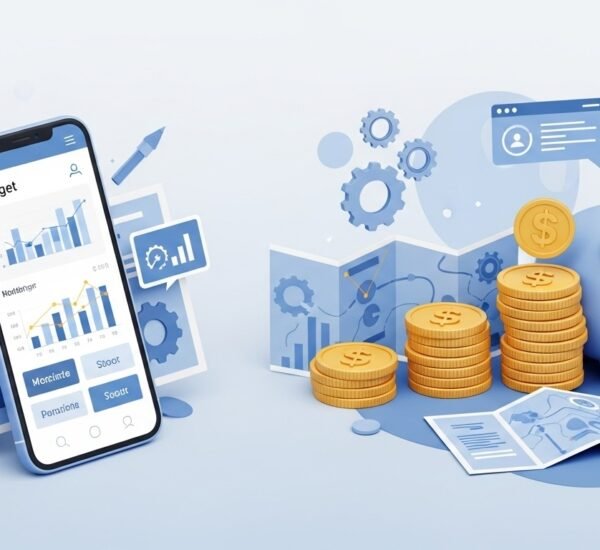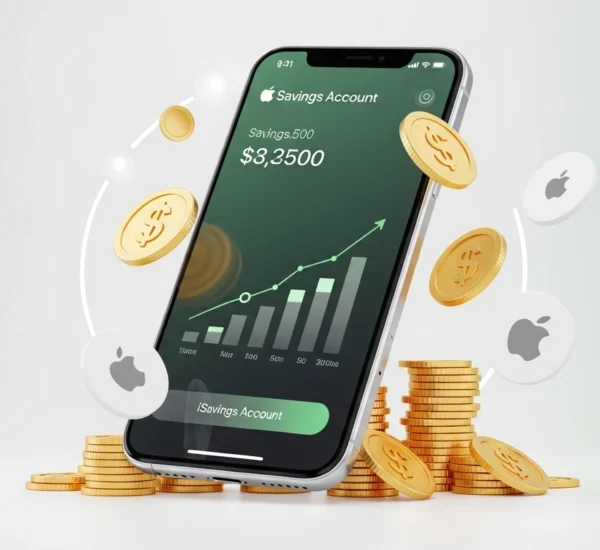Managing money begins with one simple but powerful habit tracking your spending. Whether you’re trying to save for a goal, pay off debt, or simply understand where your money goes, tracking your spending gives you the clarity and control you need. Without it, budgeting feels like guesswork.
By learning how to track spending effectively, you can identify wasteful habits, set realistic goals, and build stronger financial discipline. This article explains practical ways to monitor your spending, tools that make it easier, and why this simple practice is the foundation of long-term financial success.
Why Tracking Spending Matters
Many people underestimate how much they spend until they actually track it. A few daily coffees, online subscriptions, or impulse buys can easily add up to hundreds of dollars every month.
Tracking spending helps you see where your money is going. It reveals hidden expenses, unnecessary purchases, and patterns that drain your wallet. More importantly, it puts you in control. When you know how much you spend and on what, you can make smarter choices, cut costs, and increase your savings without feeling restricted.
In short, tracking is not about limiting your lifestyle; it’s about directing your money where it matters most.
Understand Your Current Spending Habits
Before you can take control of your finances, you need to know your current spending behavior. Start by reviewing your bank statements, receipts, and credit card bills for the last two or three months.
Group your expenses into categories such as groceries, rent, transportation, entertainment, and dining out. This will give you a clear picture of your spending distribution. You might notice that some categories take up a larger share than expected, helping you identify areas where you can make adjustments.
If you realize that small, frequent purchases are adding up, that’s progress it means you’ve found opportunities to save.
Choose a Tracking Method That Fits Your Lifestyle
There is no single right way to track spending. The best method is the one you’ll actually use consistently. You can choose from several approaches depending on your comfort level.
Some people prefer manual tracking, such as writing expenses in a notebook or spreadsheet. This method provides hands-on control and helps you stay aware of every transaction.
Others find digital tools and apps more efficient. Apps like Mint, YNAB (You Need A Budget), or PocketGuard automatically connect to your bank accounts and categorize your expenses. They also offer visual breakdowns and insights that make spending patterns easier to understand.
If you’re tech-savvy, you might even use budgeting templates in Google Sheets or Excel that can auto calculate totals and create charts.
The key is consistency. Pick one method and stick with it until it becomes a daily habit.
Categorize and Analyze Your Expenses
Once you start tracking, take time to categorize each expense. Common categories include essentials like housing, utilities, transportation, and food, as well as non-essentials like entertainment, subscriptions, and dining out.
This process helps you separate your needs from your wants. It’s not about cutting out all fun spending, but about recognizing how your choices align with your priorities.
Analyzing expenses each week or month gives you valuable insight. You might discover that you’re overspending on delivery meals or streaming services you rarely use. By making small adjustments, you can free up money for savings or debt repayment without feeling deprived.
Set Spending Limits and Goals
After you’ve identified your spending patterns, create spending limits for each category. These limits serve as gentle boundaries, not strict restrictions.
For instance, if you notice you’re spending too much on eating out, set a realistic goal to cut that amount by 20%. Instead of completely eliminating your favorite activities, find lower-cost alternatives.
Align your spending goals with your broader financial objectives. If your goal is to save $500 a month, knowing how much you spend in each area helps you decide where to make small sacrifices that don’t hurt your lifestyle.
Tracking spending also helps you see progress. Watching your expenses align with your goals feels motivating it’s proof that you’re gaining control.
Review and Adjust Regularly
Financial tracking isn’t a one-time task; it’s an ongoing process. Review your spending weekly or at least once a month. Look for patterns that repeat and evaluate how closely your spending aligns with your goals.
If you overspend in one category, don’t be discouraged. Adjust your limits or your behavior and continue improving. Financial control is about awareness and steady progress, not perfection.
Regular reviews also keep you accountable and prevent small financial leaks from turning into bigger problems. The more consistent you are, the easier it becomes to stay on track.
Tools and Apps to Simplify Spending Tracking
In today’s digital world, tracking spending has never been easier. Here are a few popular tools worth considering:
Mint: Automatically connects to your accounts, categorizes expenses, and shows your financial overview in one dashboard.
YNAB (You Need A Budget): Focuses on giving every dollar a purpose and helps you plan for upcoming expenses.
PocketGuard: Shows how much money you have left after bills and necessities, preventing overspending. Goodbudget:
A digital version of the envelope budgeting system, great for couples managing shared expenses. Spendee: Offers detailed analytics and supports multiple wallets for tracking personal and family finances.
Each of these apps can help you stay organized, but remember, the most important part is staying engaged. Technology assists you, but you still drive the process.
Common Mistakes to Avoid When Tracking Spending
While tracking your spending is powerful, a few mistakes can reduce its effectiveness. The first mistake is not recording transactions immediately. Waiting too long can lead to missed entries or forgotten details.
Another mistake is ignoring small expenses, assuming they don’t matter. In reality, these small purchases often make the biggest impact on your budget. Also, avoid creating too many spending categories. Keeping it simple increases your consistency.
Lastly, don’t treat tracking as a punishment. It’s a learning tool. Use it to understand your habits, not to shame yourself for past mistakes.
The Link Between Tracking Spending and Financial Freedom
Tracking your spending is more than a budgeting exercise it’s a mindset shift. It helps you take ownership of your money instead of letting your money control you. When you understand your financial flow, you make intentional choices that reflect your goals and values.
Over time, this practice leads to better decision making, reduced stress, and a sense of empowerment. You’ll notice that you’re no longer wondering where your money went; instead, you’re directing it with purpose.
This habit becomes the foundation for saving, investing, and achieving long-term financial independence.
How Tracking Spending Improves Mental and Emotional Health
Financial control extends beyond numbersit affects your mental well being. When you have a clear view of your finances, uncertainty decreases, and confidence grows.
People who track their spending regularly tend to feel more optimistic about their future. They know exactly what they can afford and can make decisions based on facts rather than fear.
This clarity reduces anxiety, improves focus, and supports overall mental health. Financial awareness brings peace of mind, which is just as valuable as financial success.
Practical Tips to Stay Consistent
The hardest part of tracking your spending is staying consistent, especially during busy weeks. To make it easier, set reminders to review your spending every evening or use an app that automatically syncs your transactions.
Keep your system simple complex setups often lead to frustration. Make tracking a part of your daily routine, just like brushing your teeth or checking your messages.
You can even reward yourself for sticking to your financial goals. Treating the process positively ensures it becomes a long term habit rather than a temporary challenge
Final Thoughts
Learning how to track spending is one of the smartest financial decisions you can make. It’s not about restricting your lifestyle it’s about gaining awareness and control. When you know where every dollar goes, you can make intentional choices, reach your goals faster, and live with less stress.
Whether you use a notebook, a spreadsheet, or a modern budgeting app, the result is the same: better financial confidence and peace of mind. Start tracking today, and watch how quickly your perspective on money begins to change.
.



